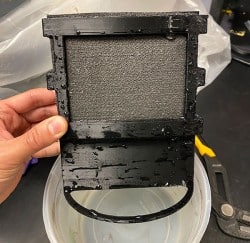The soil-powered fuel cell harnesses microbial energy for sustainable agriculture and infrastructure, outperforming traditional batteries with eco-friendly, efficient power.

A team led by Northwestern University researchers has created a new type of fuel cell that generates energy from microbes in soil.
Comparable in size to a standard paperback book, this soil-powered technology could provide energy for underground sensors in precision agriculture and green infrastructure. It offers a sustainable, renewable alternative to traditional batteries, which contain harmful chemicals, are involved in conflict-driven supply chains, and contribute to increasing electronic waste.
The researchers tested this fuel cell to power sensors that measure soil moisture and detect touch, which helps monitor animal movements. Additionally, they added a small antenna to the soil-powered sensor, enabling it to wirelessly transmit data to a nearby base station by reflecting existing radio frequency signals.
The fuel cell functioned effectively in wet and dry conditions, and its power endurance exceeded that of comparable technologies by 120%.
‘Stymied efforts’
First appearing in 1911, soil-based microbial fuel cells (MFCs) work like batteries but generate electricity from bacteria instead of chemicals. These cells need to stay hydrated and oxygenated for uninterrupted operation, which is challenging when buried in dry soil.
Winning geometry
The team spent two years developing a practical, reliable soil-based microbial fuel cell (MFC), creating four versions and collecting nine months of data on each. The final version, tested in an outdoor garden, had a unique geometry with a horizontal carbon felt anode and a vertical conductive metal cathode, resulting in compelling performance in dry and water-logged conditions. The device, buried with the top end flush with the ground, featured a 3D-printed cap and an airflow chamber. The cathode’s lower end stayed hydrated due to its depth and was coated with waterproofing material to function during floods. This fuel cell generated 68 times the power needed for its sensors and could handle soil moisture varying from dry to underwater.
Making computing accessible
The team aims to develop a fully biodegradable version, avoiding complex supply chains and conflict minerals.
Reference: Bill Yen et al, Soil-Powered Computing, Proceedings of the ACM on Interactive, Mobile, Wearable and Ubiquitous Technologies (2024). DOI: 10.1145/3631410






